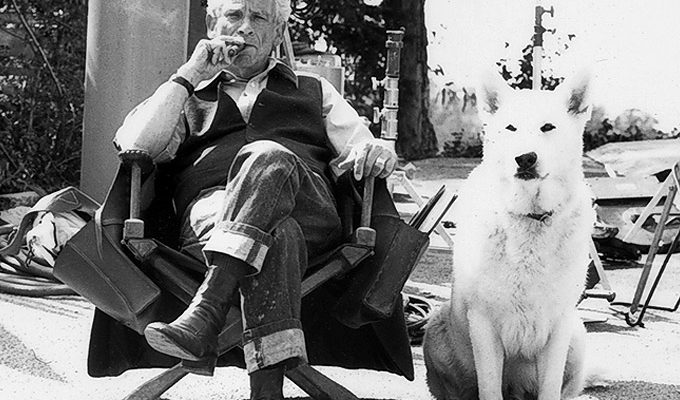 “Forty Guns” (1957)
“Forty Guns” (1957)
Fuller had started off with Westerns (his first two, “I Shot Jesse James” and “The Baron Of Arizona,” were both in the genre, as was 1957’s “Run Of the Arrow“) but his finest entry in the genre might be his pioneering widescreen oater “Forty Guns,” made only just after “Run Of The Arrow.” Commissioned by 20th Century Fox, who wanted a low-budget black & white Western (the film was shot, incredibly, in a week) to demonstrate the wide-ranging possibilities of their new CinemaScope format, the plot centers on one of the great female Western heroines, Barbara Stanwyck‘s Arizona rancher Jessica Drummond, who rules over the town with her 40 hired guns, enabling her drunken brother Brockie (John Ericson) to run riot. But things change when former killer Griff (Barry Sullivan) arrives in town to become lawmen with his two brothers, Wes and Chico. Jessica falls for him, but they become stuck in a Romeo & Juliet-style clash between their two families that doesn’t end well for either side. Like many Fuller movies, it’s a B-picture on the surface, but acted (especially by the excellent Stanwyck) and shot like an A. Not merely in its widescreen images (Fuller making full use of the new widescreen format when he shoots the landscape), but in the invention he displays in his framing: lensing down gun barrels, blurring the camera when shooting from an old man’s POV, and essentially shaking up the Western genre, paving the way for Sergio Leone and Sam Peckinpah. It’s got a sense of humor, but steers just clear of camp for the most part, and as ever, there’s an emotional depth that belies the set up. One of the director’s most undervalued pictures. “Shock Corridor” (1963)
“Shock Corridor” (1963)
The closest thing to a horror film that Fuller ever made, and an example of the American exploitation film at its finest, if “Shock Corridor” isn’t the best thing the director did, it’s only the film that came after that beats it out. With ambitions to win a Pulitzer Prize, journalist Johnny Barrett (Peter Breck) infiltrates a mental hospital to solve a murder that took place there. But the three witnesses have all lost their minds (one is a Nobel Prize winner whose work on the A-bomb has caused him to regress to childhood, one is a Korea vet who’s become a Communist, and one is a black college student who now thinks he’s a white supremacist), and Johnny soon follows them, electro-shock therapy and being essentially raped by a group of nymphomaniac women on the ward soon convincing him that his stripper girlfriend is actually his sister. Fuller uses his shock-value, almost tabloid-y subject matter to indict the wrongs of America past and present, while pairing glorious, chiaroscuro-filled black & white cinematography by the great Stanley Cortez (“The Magnificent Ambersons,” “Night Of The Hunter“) with lurid 16mm color dream sequences that he lensed himself, with the effect that you too feel yourself unraveling a little bit. Falling somewhere between “One Flew Over The Cuckoo’s Nest” and “Freaks,” it’s the strangest, saddest and most singular picture that Fuller ever made.

